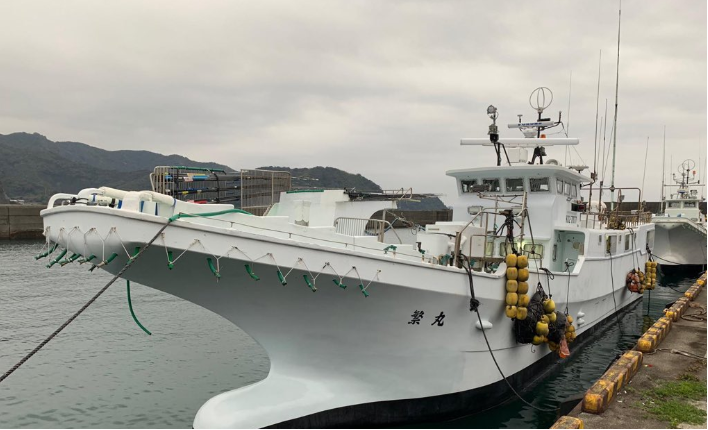
Kochi and Miyazaki Pole-and-Line Albacore tuna fishery

Location & History
The Kochi and Miyazaki pole-and-line albacore fishery is an offshore Japanese fishery, hunting out on the high seas in the Northwest Pacific Ocean. The fishery also fishes for skipjack tuna and of their 19 fishing vessels, 7 are from Kochi and 12 are from Miyazaki. The tuna fishing season for albacore tuna in particular begins in the summer, returning to shore after each week-long fishing event.
How is the Tuna Caught?
All the albacore tuna from this fishery is caught using traditional pole-and-line methods, using one hook on a line attached to a bamboo pole, catching one fish at a time. Once a school of tuna has been located, the boat sprays water onto the surface of the ocean to mimic the movements of small fish, which attracts tuna over to the boat. The line hooks are not baited, but fishers throw live fish, typically anchovy or sardines from Japanese fish stocks, into the water to start a tuna feeding frenzy. The crew will then lower their lines into the water and when a tuna gets caught on the hook, the fisher will haul the fish out of the water and onto the deck of the boat. The tuna is quickly removed from the hook, and the same hook and line are returned to the water to start again. This fishery is very selective, meaning that endangered species such as dolphins, turtles and sharks are highly unlikely to be caught, due to the one-by-one method, and because fishing takes place at the surface, there is virtually no negative impact on different marine habitats. The tuna are stored, whole, in a tank of brine water - not frozen on ice, so fishing trips are usually short (lasting up to only one week) and once returned to the shore are transported for processing, which typically leads to sashimi markets for albacore tuna in particular. The most recent annual catch data showed that around 5 million KG of albacore tuna are caught from this fishery every year!
Unique Features
Kochi city is famous for its grilled tuna - Katsuo which can be used as a main dish in sushi or sashimi form, or later dried to make Katsuobushi - dried tuna flakes. The Katsuobushi are used to flavour a variety of different Japanese broths as well as miso soup.
Gallery
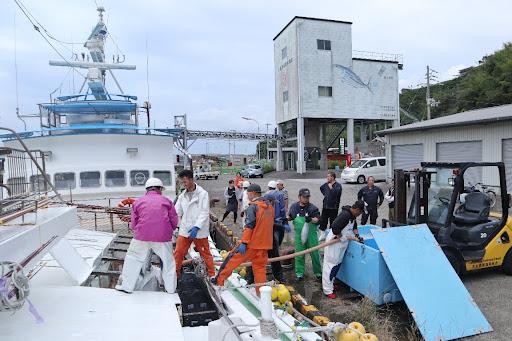
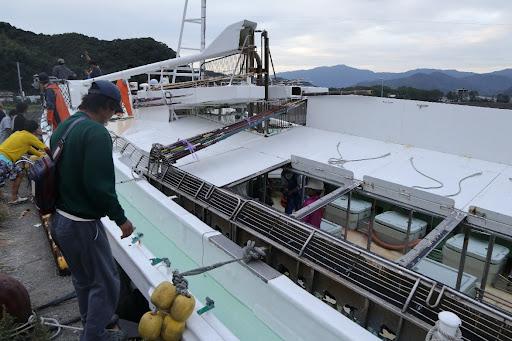
Typical Vessel
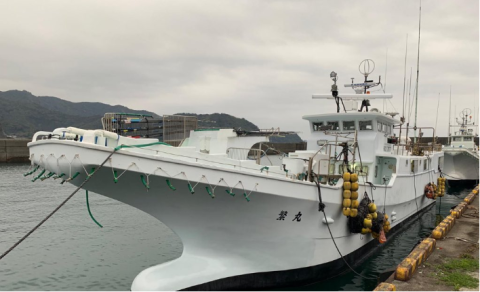
| Item | Value |
|---|---|
| Crew Size | 25 |
| Size Range (m) | 35 |
| Onboard Cold Storage? | Yes |
Fleet Capacity
-
17795t
- Annual Catch Volume (metric tonnes)
-
19
- Number of Vessels
Target Species
Albacore Tuna
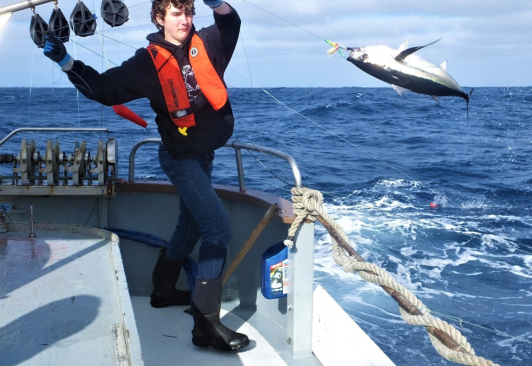
Fishing Gear
Pole-and-line
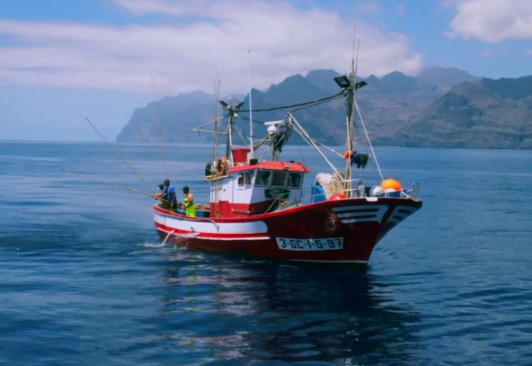

Regional Fisheries Management Organisations
Western and Central Pacific Fisheries Commission (WCPFC)
Regional fisheries management organisations (RFMOs) are international bodies formed to manage fish stocks in an oceanic area. They include several countries with fisheries operating in that area, and some focus on particular species such as tunas. They are established through international agreements and treaties. RFMOs typically collect fishery statistics, assess fish stock conditions, monitor fishery activity and make fishery management decisions.
The Western and Central Pacific Fisheries Commission (WCPFC) was established by the Convention for the Conservation and Management of Highly Migratory Fish Stocks in the Western and Central Pacific Ocean (WCPF Convention). The Commission seeks to manage issues that arise in high-seas fisheries, to prevent overexploitation of highly migratory fish stocks.
Stock Status Reports
South Pacific Albacore Tuna Stock Status
2022-02-17The stock status of a fish species signifies whether a species is 'overexploited', 'fully exploited' or 'underexploited'. Different organisations use different parameters to assign these labels. For example, the Food and Agricultural Organisation of the United Nations (FAO) deems any species to have less than 40% of it’s ‘unfished biomass’ to be overexploited.
The aim of assigning stock status to a species is to ensure that catches are kept at a level where future catches will not be affected, in other words, to maintain a healthy, viable population of fish.
In addition to biomass, spawning potential, catch trend and size-age composition may be used to determine stock status. These are important factors to consider as some species are more resilient than others and have different ecological features. For example, albacore tuna are unique in the sense that their primary food source is cephalopods, whereas other tuna species typically target fish as their primary food source. This unique aspect of albacore ecology is important to consider as their overexploitation will have an effect on other trophic levels.
North Pacific Albacore Tuna Stock Status
2021-03-25The stock status of a fish species signifies whether a species is 'overexploited', 'fully exploited' or 'underexploited'. Different organisations use different parameters to assign these labels. For example, the Food and Agricultural Organisation of the United Nations (FAO) deems any species to have less than 40% of it’s ‘unfished biomass’ to be overexploited.
The aim of assigning stock status to a species is to ensure that catches are kept at a level where future catches will not be affected, in other words, to maintain a healthy, viable population of fish.
In addition to biomass, spawning potential, catch trend and size-age composition may be used to determine stock status. These are important factors to consider as some species are more resilient than others and have different ecological features. For example, albacore tuna are unique in the sense that their primary food source is cephalopods, whereas other tuna species typically target fish as their primary food source. This unique aspect of albacore ecology is important to consider as their overexploitation will have an effect on other trophic levels.
Inter-American Tropical Tuna Commission (IATTC)
Regional fisheries management organisations (RFMOs) are international bodies formed to manage fish stocks in an oceanic area. They include several countries with fisheries operating in that area, and some focus on particular species such as tunas. They are established through international agreements and treaties. RFMOs typically collect fishery statistics, assess fish stock conditions, monitor fishery activity and make fishery management decisions.
The Inter-America Tropical Tuna Commission (IATTC) is an RFMO that is responsible for the management of tuna and tuna-like species throughout the Eastern Pacific Ocean. Established in 1949, this is the oldest of the existing tuna RFMOs, originally being set up for scientific research only.
Stock Status Reports
Albacore Stock Status
2022-11-01The stock status of a fish species signifies whether a species is 'overexploited', 'fully exploited' or 'underexploited'. Different organisations use different parameters to assign these labels. For example, the Food and Agricultural Organisation of the United Nations (FAO) deems any species to have less than 40% of it’s ‘unfished biomass’ to be overexploited.
The aim of assigning stock status to a species is to ensure that catches are kept at a level where future catches will not be affected, in other words, to maintain a healthy, viable population of fish.
In addition to biomass, spawning potential, catch trend and size-age composition may be used to determine stock status. These are important factors to consider as some species are more resilient than others and have different ecological features. For example, albacore tuna are unique in the sense that their primary food source is cephalopods, whereas other tuna species typically target fish as their primary food source. This unique aspect of albacore ecology is important to consider as their overexploitation will have an effect on other trophic levels.
